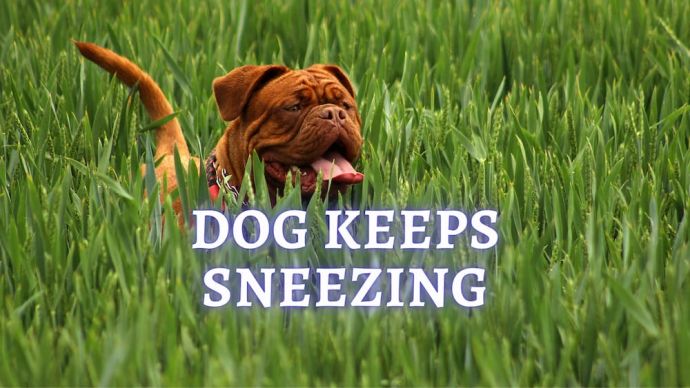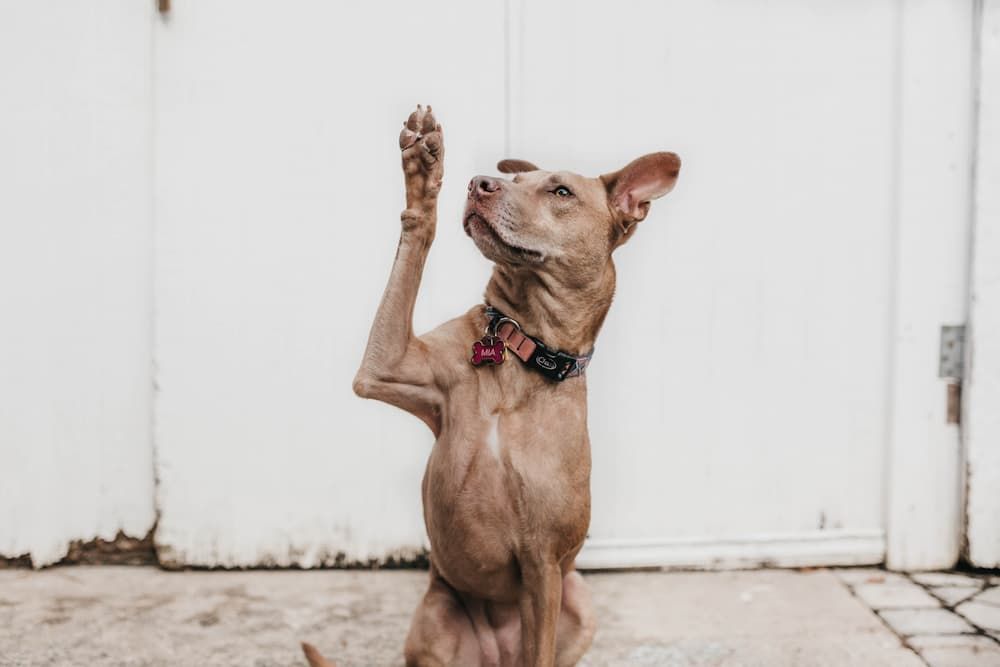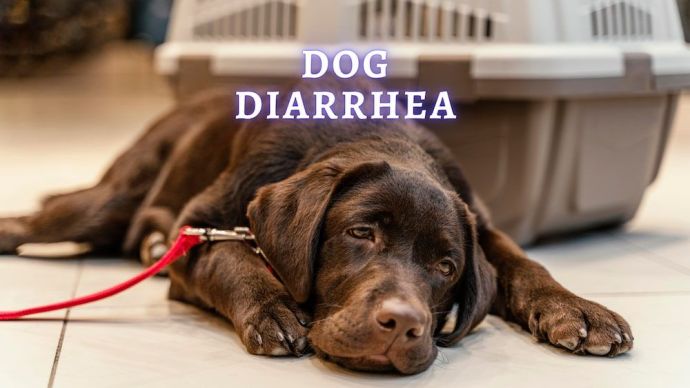Dog Anal Glands: How Often to Express Dog Glands?
Written by:
Author: Scott Jeffrey
Scott is a professional blogger with 12+ years of experience in writing, and holds an MA in anthropology. He has two cats as housemates. Also, Scott is passionate to research on pet-related topics such as dog training, puppy feeding, and cat health.
View all 63 articlesLearn about our editorial process and veterinary review board.
Reviewed by:
Veterinary review
by Dr. Edele Grey
Dr. Edele Grey is a veterinary surgeon with seven years of experience. She professionally works mostly with horses but has treated pets of all sizes including terrapins, llamas, and others. Dr. Grey graduated with honors from the University College Dublin, Ireland, has completed further education in Equine Sports Medicine. In her free time, she enjoys writing about pet ownership and educating people about veterinary care of animals and preventing disease.
View all 10 articlesLearn about our veterinary review board
Viewed: 879
Updated on: 10/07/2021
Side thickens, and bacteria from feces can travel into the glands (sacs). These can lead to inflammation in the area. This inflammation of the perineal and anal regions causes pets discomfort and pressure from full glands. You may see your pet to relieve the pressure by scooting their bum on the ground, excessively licking or chewing their tail and bum, or seeming to need to defecate frequently. When your pet manages to release this pressure, there will often be stains on your carpet or an extremely off-putting and fishy smell.
How often do my dog’s anal glands need to be expressed?
The amount you will have to express anal sacs relates to several factors, including how often your pet naturally empties the glands during defecation. Some pets also have narrowed openings to these glands, which increases the risk of them becoming blocked. Some dogs will need their sacs expressed on a regular basis, while others may never need their sacs expressed manually.
Some dogs that are prone to anal gland problems or overweight pets may need more regular expression of their anal sacs, such as once a month. If your pet is unable to release their anal sacs on their own, then regular manual expression from yourself or your veterinarian will be necessary.
READ MORE: Best Artificial Grass for your Dog’s Potty
What are the signs your dog needs their glands expressed?
Pets will usually start to bite at their behinds, scoot along the carpet when their anal sacs become uncomfortably full. Some may begin to suddenly sit down painfully or look at their bum and yelp randomly. You may notice a strong, fishy odor occasionally if your pet’s glands are leaking small amounts, or you may see stains on your carpet or pet’s bed. The area becomes extremely itchy, and the mounting pressure and pain can indicate that your pet may have an impacted or infected anal gland. [1]
READ MORE: Why Does My Dog Smell So Bad?
The process of expressing anal glands:
Your vet will bring your dog into the consultation room and have you or a nurse/tech hold or restrain them gently on the examination table. Your vet will then palpate the sacs with a lubricated and gloved finger before gently milking them to express their contents into a paper towel or some cotton.
Suppose your dog has particularly inflamed or full anal sacs or they have developed an infection. In that case, your vet may consider numbing the area first, as your pet may experience some additional discomfort during the expression process.
After your vet has expressed your pup’s anal sacs, they will gently clean the area to prevent infection and remove any gland fluid from your pet’s fur.
The whole process can take just a few moments, but it is often an essential aspect of your vet visit.
How to express my dog’s anal glands?
You can help your dog express their anal sacs at home. Always be guided by your veterinarian in this process, so have your vet demonstrate the process to you during a consultation so you can then complete it at home. Walking you through the steps in person and knowing what to expect can make the process more manageable when you express your pet’s anal sacs at home.
Regularly expressing your dog’s anal glands at home allows you to ensure that it is as comfortable an experience as possible. This also allows you to prevent impactions and infections from recurring as you can express your pet’s sacs at the first sign of discomfort. Ensure that you have a plan to manage the mess and keep plenty of treats on hand to help settle your pet’s nerves. You must stay safe throughout the process with gentle restraint of your pup so that you do not injure them or yourself. Positive reinforcement in the form of treats, soothing words and gentle scratches can go a long way toward keeping your pet happy with this procedure.
To express your dog’s anal glands
Take them to a safe area of your home and keep them comfortable. It is wise to restrain your dog with their leash as expressing the sacs if they are inflamed can be uncomfortable. You should have a second person on hand for restraint if at all possible. It’s not recommended that you express your pet’s sacs using the internal method as this can be uncomfortable and there are risks for your pet.
External expression method
- Wear a glove and apply some lubricant to your thumb and forefinger.
- Have some paper towels and a washcloth nearby.
- Place a thumb and first finger along the outside of your dog’s anus to locate the anal sacs at 4-5 o’clock and at the 7-8 o’clock position. If they are inflamed, they can be grape-sized in smaller dogs or plum-sized in larger dogs.
- Once located firmly but gently squeeze each gland separately in an upward motion toward your pet’s Angus to ‘milk’ the contents out. Keep some paper towel in place as the contents may squirt with force.
- When both glands have been expressed, wpe the area with some warm pet-safe soapy water and gently dry.
Normal anal gland fluid should be liquid and brown with a strong odor, if the fluid is grey, yellow, or green, there is a chance that the anal sacs could be experiencing an infection. Thick fluid or solid discharge is also a concern, and you should consult with your veterinarian immediately.
If your pet is experiencing any pain while having their sacs expressed, this is an indication that you should stop and make an appointment with your DVM as soon as possible.
DVM Edele Grey
FAQ
What dog breeds need their glands expressed?
Almost every breed of dog has the potential to require their anal glands expressed. Male and female dogs can both suffer with gland issues. Some breeds are more prone to anal gland issues. These include mini-Poodles, Lhasa apsos, Cocker spaniels and Beagles.
What are the risks when the glands are full?
When a pet’s anal glands fill up, the fluid becomes thicker and bacteria from the gut travel into the glands. This leads to pain and inflammation, which can develop into infections and painful abscesses. The swelling and pressure from an abscess weakens the skin and can burst. This may leave your pet with a reddened ulcerated area to the side of the anus, which can pose a further risk of infection.
How much does it cost to have a veterinarian express a dog’s anal glands?
Most vets can include expressing anal glands as part of a regular checkup. The cost of expressing anal glands from most veterinarians is typically less than $50, and many vets will offer to walk you through the process so you can complete it at home with your dog as well.
It may be advantageous to have a vet express anal glands for your pet if your dog has had problems with infections or abscesses in their anal glands in the past or if they have recently had an abscess. A vet will be able to offer specialty care and cleaning or a numbing of the area to prevent discomfort.
Can I get my dog’s anal glands expressed at the groomer?
Many groomers also offer services to express dogs anal glands. Every time that you send your dog off to the groomer for a bath, cut or clipping, you can still have someone with experience express your dog’s anal gland. Many groomers already have the safe restraints, clean up tables, and skills to express dogs anal glands for you and to offer a wide range of solutions for your grooming needs too. Many groomers will ask if you would like to include it, and it can be a great way to let you know about any problems or get rid of any potential discomfort your pet could be feeling while they are out getting gussied up..
Can problem anal glands be removed in dogs?
Some pets do need their anal glands removed. This is not a surgery to be taken lightly as there are complications and some longer term risks with the procedure.
Can a dog express their own anal glands?
Dogs naturally express their anal glands each time they defecate. For this to occur properly, your pet needs a firm though not hard stool to help empty the gland.
Conclusion
If you spot any signs that your dog could require assistance with their anal glands, you should contact a vet immediately. Your pet may need expression once if they’ve had recent diarrhea which allowed their glands to fill up or they may need ongoing care and management. Speaking with your veterinarian will help you determine what is best for your pooch, meaning you and your pet can enjoy more care-free adventures together.
Article Sources:
- Duijkeren, E. van. “Disease Conditions of Canine Anal Sacs.” Wiley Online Library, onlinelibrary.wiley.com/doi/abs/10.1111/j.1748-5827.1995.tb02756.x.
- Beynen, Anton C. “Diet and Anal-Sac Impaction in Dogs.” Research Gate, researchgate.net/profile/Anton-Beynen/publication/337811246_Diet_and_anal-sac_impaction_in_dogs/links/5deb3317299bf10bc34659b9/Diet-and-anal-sac-impaction-in-dogs.pdf.
READ MORE: How to Puppy-Proof Your Home for New Puppy?
 Dog Care My Dog Keeps Sneezing: 6 Health Reasons Why Your Dog Won’t Stop Sneezing (Vet Approved)
Dog Care My Dog Keeps Sneezing: 6 Health Reasons Why Your Dog Won’t Stop Sneezing (Vet Approved) - 65
- 0
 Dog Veterinary Tips Why is my Dog throwing up: Causes and Preventing (Veterinary Advice)
Dog Veterinary Tips Why is my Dog throwing up: Causes and Preventing (Veterinary Advice) - 23424
- 5
 Dog Care Why Is My Dog Bleeding From Its Butt? Causes and treatment of rectal bleeding in the dog
Dog Care Why Is My Dog Bleeding From Its Butt? Causes and treatment of rectal bleeding in the dog - 22076
- 0
 Dog Care My Dog Keeps Scratching His Mouth: Reasons Why Your Dog Scratching Face
Dog Care My Dog Keeps Scratching His Mouth: Reasons Why Your Dog Scratching Face - 17561
- 1
























